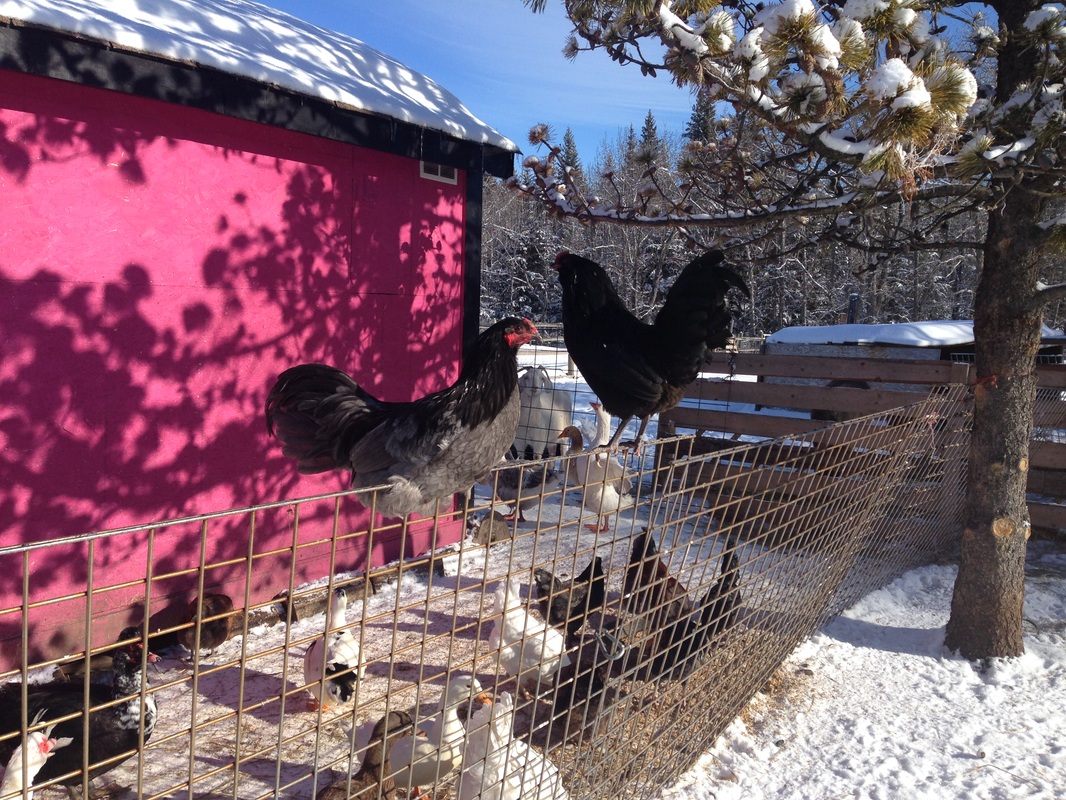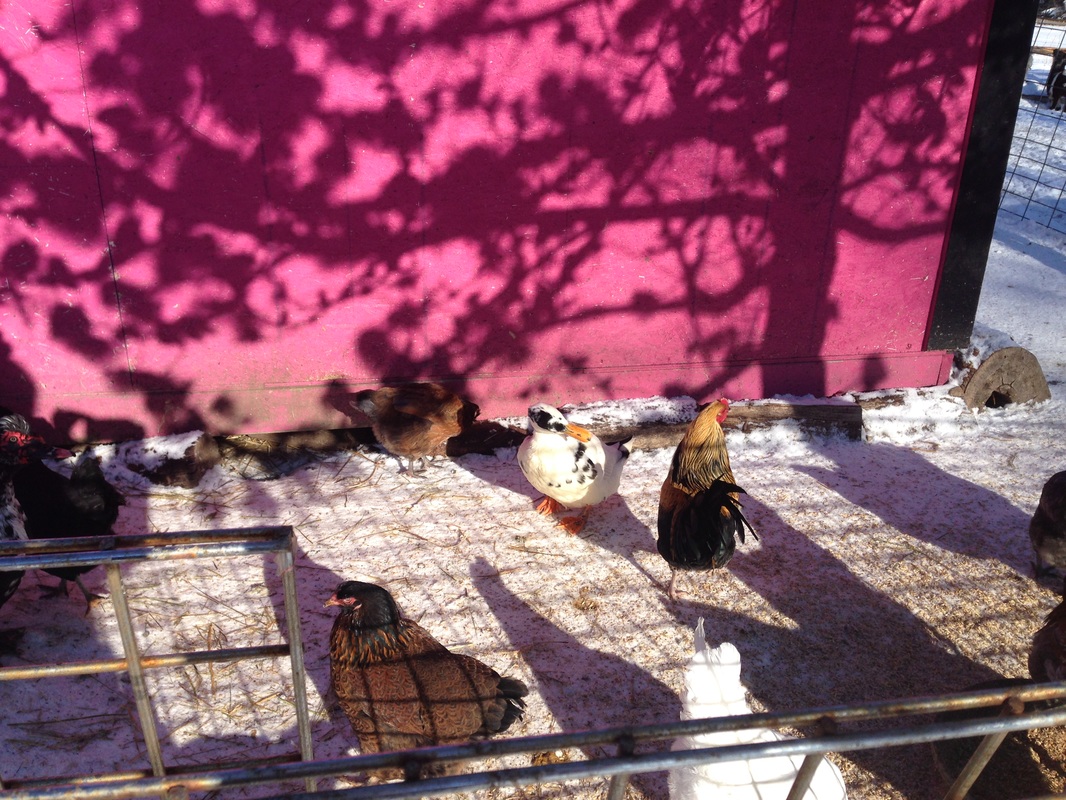Some of the offspring definitely have Serama genes. The beautiful beetle green black feathers and long tail feathers are Serama traits. They have black thin legs, too and are great foragers and hardy birds. I did not keep any thought, because they are quite small and dress out to a three pound bird for the soup pot.
The Serama offspring combined with the offspring of the hen who hatched her brood in the barn. Neither of the broods would go into the chicken coop, even when the weather got very cold. The majority spent the winter perched in the day house, never meant to keep chickens in, but to give them a spot out of the snow in the winter in which to hang out. None of them got frozen toes, amazingly enough. Two of the roosters and one hen perched outside in the pine tree, but when it got to almost 40 below, they decided to stay inside finally, except one, who perished in the cold. I had caught the three birds repeatedly and locked them in the coop and the next night they were outside again. The rooster who stayed outside was raven bait by morning, so sad, but the other two learned that inside was better than outside and still go in for the night.
Now, with the disproportionate number of roosters, I will have to have them butchered, but the chicken processing plant closed and it is not worth taking ten chickens to the colony an hour away. I may have to do this myself, but killing the birds does not bode well with me. I can clean and pluck them, but kill them, I don't think so. I have the roosters listed for sale in several places and have no takers. A few of them are Easter Eggers, that is they have some Ameraucana blood in them, which will produce hens who lay coloured eggs of blues and greens.
There is one rooster whose breeding I cannot figure out. He is large, blue on the bottom and a beautiful copper on the top. He is also very late maturing, only now getting his male feathers. The other roosters have had their feathers for months. The only blue chickens I have are Ameraucanas, but he has no muff or blue legs. He is a mystery boy for sure.
Like many of the males on farms, they are excess and will be used for meat. Only one rooster is needed for a small flock of hens. Too many end up fighting amongst themselves. I have a beautiful splash Ameraucana rooster from Ontario and lots of new eggs coming in April for hatching. This weekend some of the hens are going to new homes to produce hatching and eating eggs for others. Of those new chicks, there should be a spectacular new rooster. A new breed, Cream Legbars, will be added to the Chanteclers and Ameraucanas. They have sky blue eggs!!
It is not good luck to be a male on a farm. Good thing that is not how it is in other walks of life, right?




 RSS Feed
RSS Feed